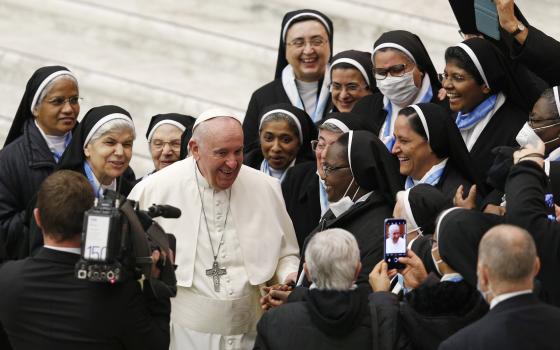Today is the feast of the Assumption. [Update: No, it isn't, as several readers have pointed out. My bad. My apology is here. The rest of the article still rings true.]
The first metropolitcan cathedral to be built in America, in Baltimore, was dedicated to the Blessed Mother under this title. It remains, arguably, the most beautiful church in America, so distinctly Federalist in its architecture while creating a truly exquisite space for the celebration of the Mass, the building stands as a rebuke to those who believe nothing good comes from dialogue with the ambient culture.
But, the building also stands as a rebuke to a certain strand of American Catholic historiography. Some have argued that the Church of John Carroll was imbued with the ideas of the Enlightenment. Indeed, the architectural forms of the Cathedral would seem to suggest as much. But, in some of their less careful moments, the proponents of this supposedly enlightened "Maryland Tradition" contend that the Church of Carroll stood in opposition to many of the popular practices of Catholicism, that the kitsch of our faith came with the immigrants, and that the trajectory of American Catholicism was, sadly, altered in favor of the kinds of popular devotions to the saints and especially to the Virgin Mary that the Maryland Tradition preferred to minimize.
Alas, the cathedral is dedicated to the Assumption which was, at the time, not even yet a defined dogma of the Church. (That definition came in 1950.) There are other evidences that run contrary to the Maryland Tradition school of historiography. There were Corpus Christi processions in the early American Catholic church. There are many sermons about the Blessed Mother and the saints that have come down to us from that time. And, as often as John Carroll gave praise for certain features of our polity that we associate with the Enlightenment, there are other instances where he distanced himself clearly from many of the Enlightenment's ideological predispositions.
There was a time when a similar historiography about American Protestantism ruled the academy. It was believed that there was an enlightened eighteenth century, wedged between a Puritan seventeenth and a revivalist nineteenth century. That never made much sense - ideas do not hibernate for an entire century - and it took the researches of scholars like Patricia Bonomi to expose the myth of America's irreligious eighteenth century. American Catholic historians need to do similar work on our own early history. They can start by contemplating the Basilica in Baltimore that John Carroll dedicated to the Assumption.



